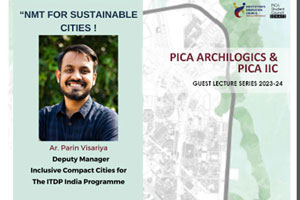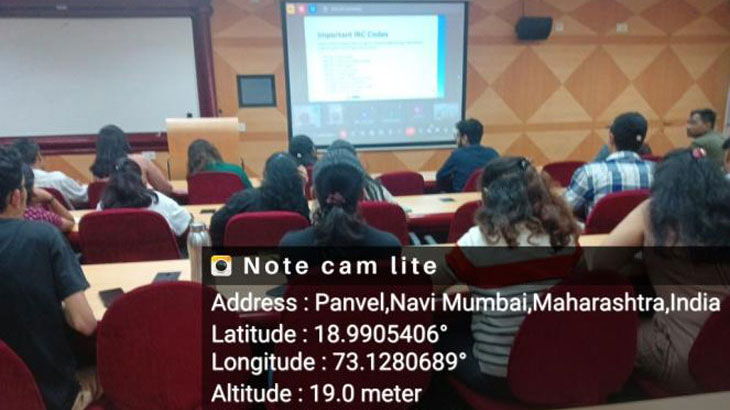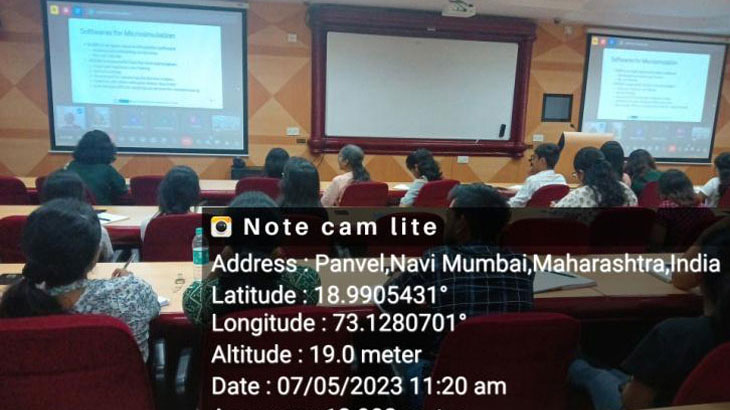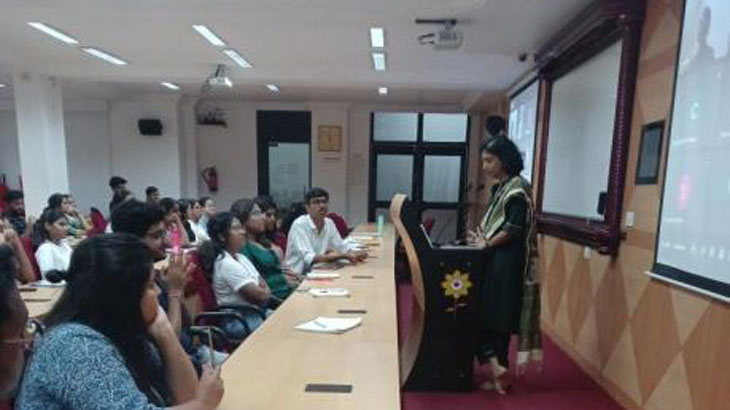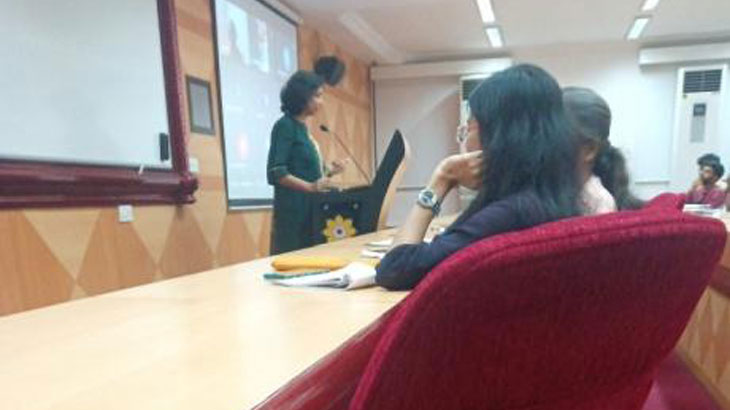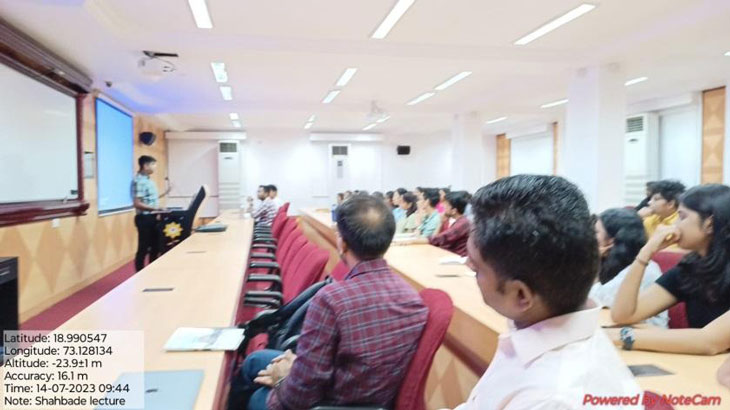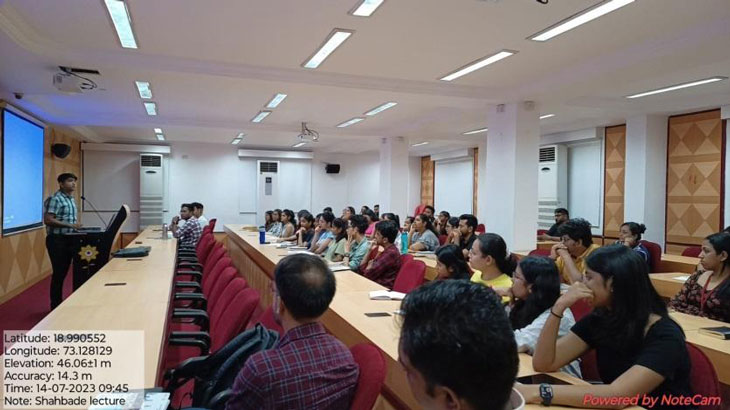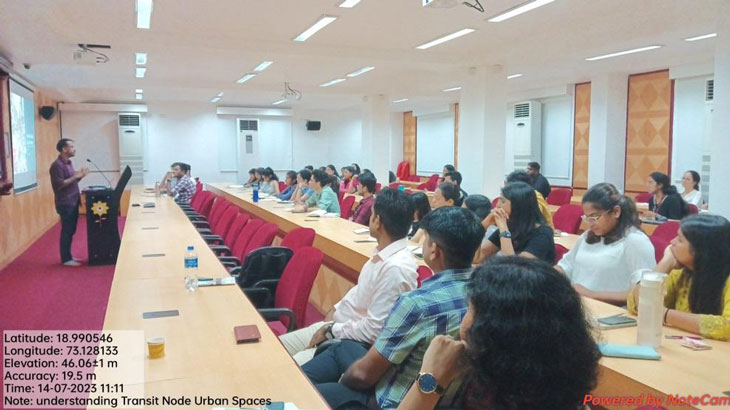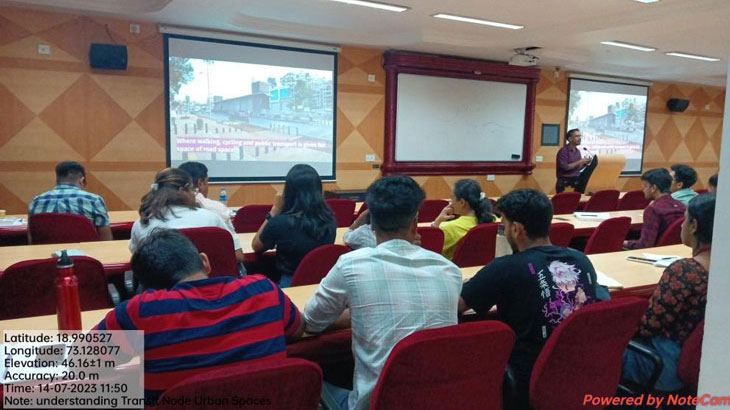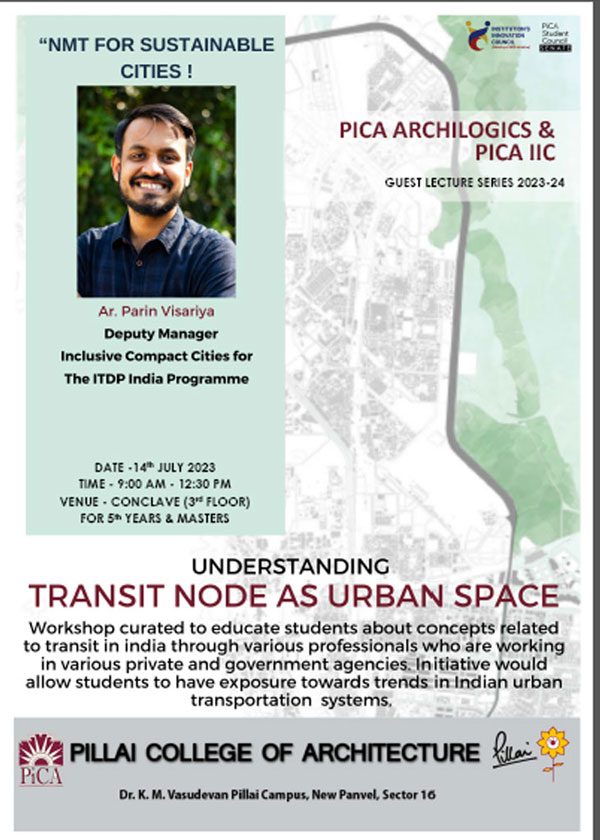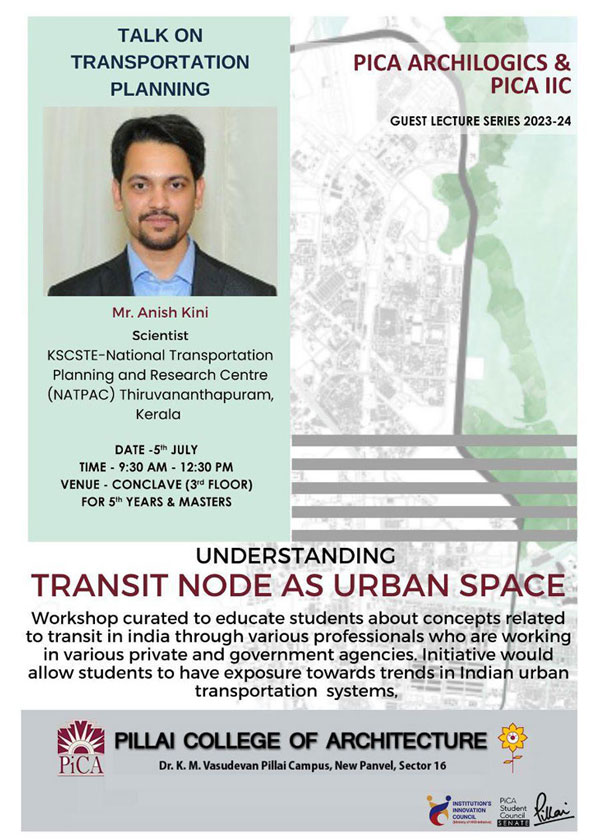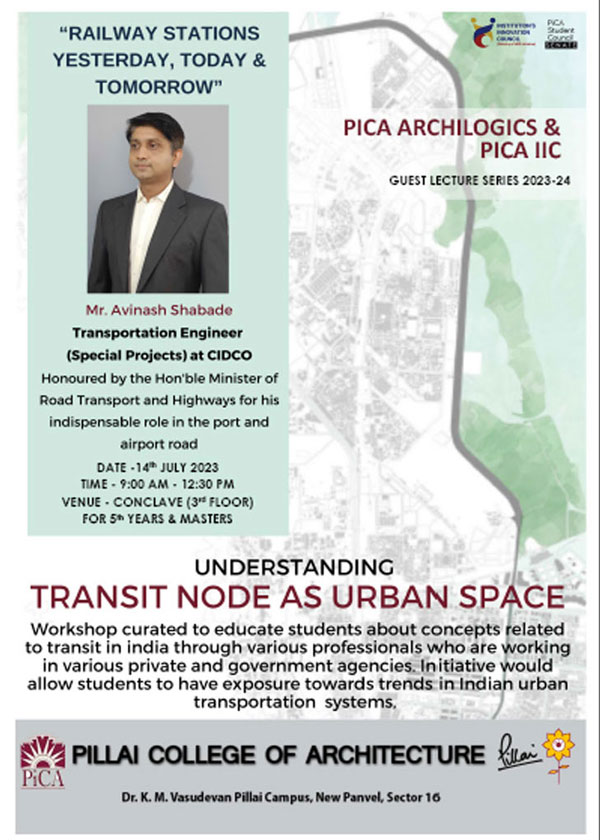| PiCA ARCHILOGICS & PiCA IIC Guest Lecture Series - 2023-24 | |
| Session | 2023-24 |
| Year | 5th Sem-9 & M.Arch. -Sem-3 |
| Organizing Faculty | Prof. Harshada Katkar |
| Faculty | Prof. Sarojini, Prof. Geeta Thakkar, Prof. Suvarna, Prof. Tanaya, Prof. Aarti |
| No. students attended | 50 |
| No. of faculty | 05 |
| Date & Time | Venue | Guest Lecturer | Topic | |
|---|---|---|---|---|
| Session 1 | 5th July 9.30 a.m. - 12.30 p.m. | Conclave -1 3rd floor | Mr. Anish Kini – Scientist | Talk on "Transportation Planning" |
| Session 2 | 14th July 9.30 a.m. - 10.30 p.m. | Conclave -1 3rd floor | Mr. Avinash Shabade | “Railway Stations Yesterday, Today & Tomorrow” |
| Session 2 | 14th July 9.30 a.m. - 10.30 p.m. | Conclave -1 3rd floor | Ar. Parin Visariya | NMT for Sustainable Cities |
Objective: Workshop curated to educate students about concepts related to transit in India through various professionals who are working in various private and government agencies. Initiative would allow students to have exposure towards trends in urban transportation systems.
Session 1: Mr. Anish Kini – Scientist
KSCSTIE – National Transportation Planing and Research Centre (NATPAC) Thiruvananthapuram Kerala.
Mr. Anish covered the following topics in detail during his session
- Transportation Planning:
Overview of Transportation Types: Land, Water, and Air.
Categorizing Transportation: Transportation Planning, Traffic Engineering, and Highway Engineering.
Case Studies: Covering Traffic Impact Assessment, Traffic Management Strategies, Safety Analysis, Parking Surveys, and In-and-Out Surveys.
Data for Building the Base Model. - Significance of IRC Codes:
Explanation of Various Codes Applicable in Transportation Field, including those for Cycle Tracks, Pavement / Road Markings, Traffic Signs, Pedestrian Facilities, and Traffic Forecasting. - Inclusive Guidelines:
Homogenized Guidelines for People with Different Abilities.
Universal Design Principles and Reasonable Accommodation.
Ensuring Information System Accessibility.
Ensuring Accessibility at Stations, Platforms, and Train Coaches.
Implementing Monitoring and Feedback Mechanisms. - Public Transport Nodes:
Integration of Multiple Modes of Transportation.
Other Public Transport Stops and IPT (Intermediate Public Transport) Stands for Pickup and Drop-Off.
Enhancing First-Mile and Last-Mile Connectivity with Battery-Operated Shared Autos / Taxis.
Providing Parking Facilities with Solar-Powered Electric Charging Stations.
Implementing Entry and Exit Segregation.
Fostering Transit-Oriented Development (TOD).
Improving Pedestrian Facilities.
Promoting Sustainable Options such as the use of Green Building Materials, Renewable Energy Resources & Rainwater Harvesting.
Session 2: Mr. Avinash Shabade
Transportation Engineer (Special Projects) at CIDCO
Strong operations professional skilled in Traffic Engineering, Transportation Planning & Engineering, Highways, Smart City and Urban Transport Infrastructure Planning & engineering. The major role in the office is planning and coordinating for all major roads in Navi Mumbai. Recently felicitated by Hon’ble Minister of Road Transport and Highways for the contribution in port and airport connectivity project.
Mr. Avinash Shabade covered the following topics in his presentation.
- Rail networks in MMR and number of stations
- Design of three generation of of station areas in MMR
- Importance of pedestrian dispersal in station premise
- Importance of parking, norms for the same and their location in the station area
- Need of Multimodal connectivity
- Varius codes for accessibility in station area from Indian road Congress
He explained the above points by discussing different Mumbai & Navi Mumbai railway stations, there design approach, Problem Faced, New proposals.
Session 3: Ar. Parin Visariya
Deputy Manager Inclusive compact cities for ITDP Indian Programme. Parin is a Deputy Manager – Inclusive Compact Cities for the ITDP India Programme. He is an architect and urban designer. He believes that the best way to experience a place is walking on its streets and traveling through public transport. His key area of work includes helping government officials implement high-quality walking and cycling infrastructure, and parking management in urban areas.
The invited lecturer, Architect Parin Visariya covered the following key points during the presentation:
- The involvement and significance of urban designers in shaping the urban environment.
- The obstacles and intricacies encountered when designing urban spaces.
- The role played by stakeholders in the design of urban areas and the consequential impact on the design process.
- Reducing private car use not only requires improvements in public transit, cycling, and walking facilities, but also better management of private car use.
- Encouraging cycling, or walking, cities can reduce CO2 emissions and air pollution, one should focus on increasing public transit.

